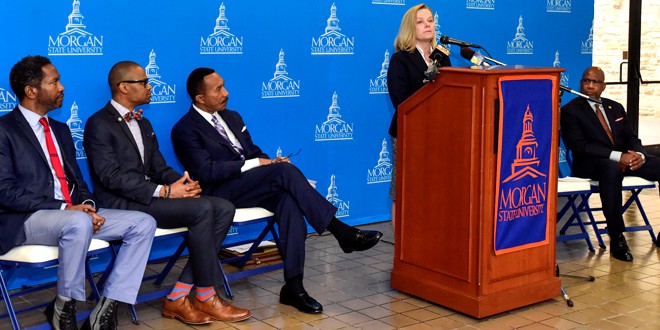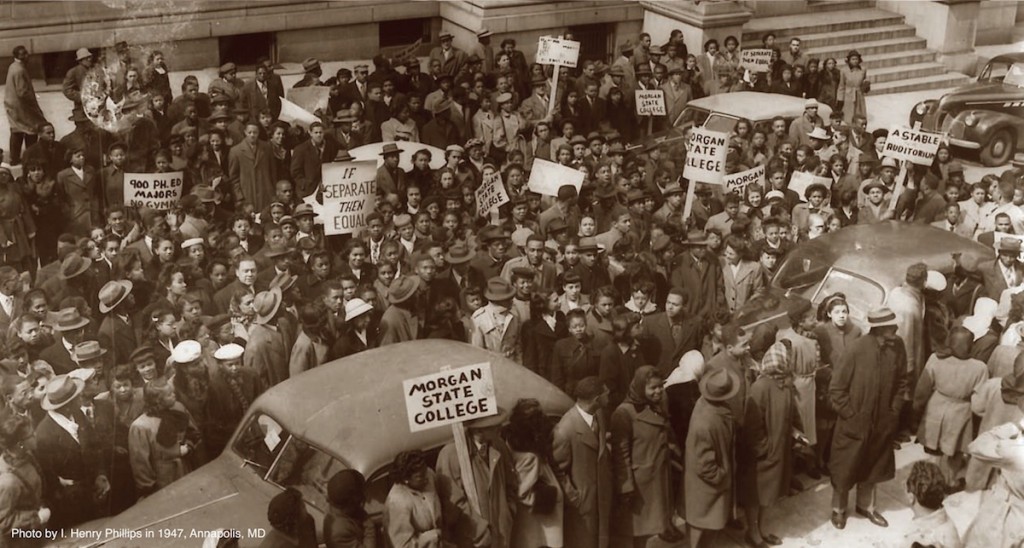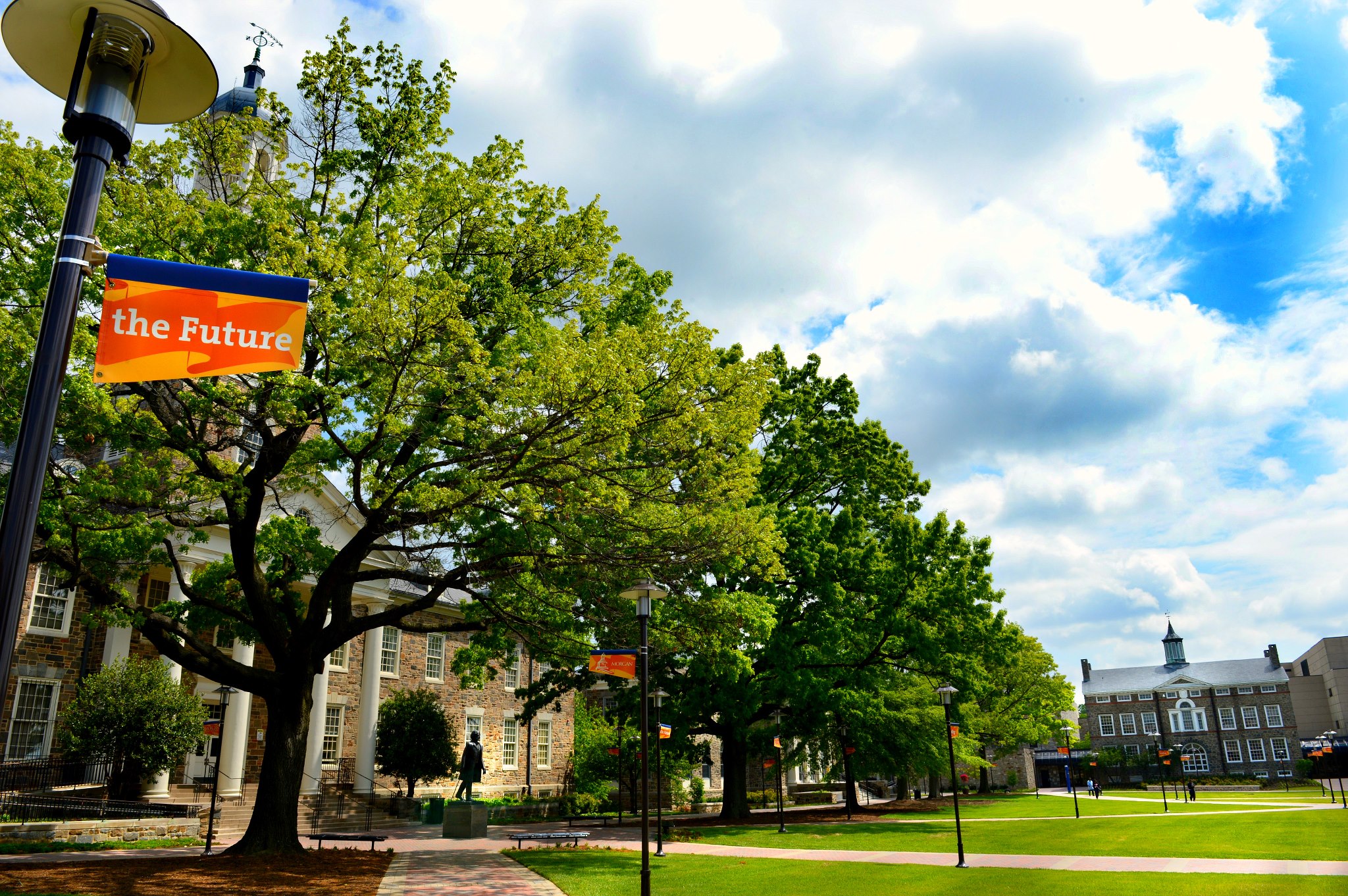
Stephanie Meeks, president and CEO, National Trust for Historic Preservation (photo credit: Morgan State University)
The National Trust for Historic Preservation has announced that Morgan State University, the largest historically Black college in Maryland and one of the oldest in the nation, has been designated a National Treasure. With 20 current buildings on the university’s northwest Baltimore campus eligible for listing on the National Historic Register, Morgan State is the second Black college to receive this designation and the first to have its entire campus recognized in this way.
Founded in 1867 as one of the nation’s earliest institutions to offer post-secondary education for African Americans and the largest in the state of Maryland, Morgan State University’s urban campus has an impressive collection of historic buildings. The University’s varied built landscape now features 20 contributing structures—ranging from Classical and Italianate to Modern and Brutalist—eligible for listing on the National Register. Buildings on the campus were designed by pioneering and celebrated black architects such as Albert Cassell, Hilyard Robinson, Louis Fry, and Leon Bridges. The oldest building on campus is Carnegie Hall, a gift of philanthropist Andrew Carnegie.
“The National Trust believes Historically Black Colleges and Universities tell an important and often overlooked American story,” said Stephanie Meeks, president and CEO of the National Trust for Historic Preservation. “We are proud to partner with Morgan State University-- a nationally-recognized innovator and education leader-- to demonstrate how the preservation of their remarkable older buildings can be a springboard for growth, rejuvenation, and revitalization.”

Morgan State College students protesting (photo credit: Morgan State University)
Morgan State University has a storied history as an institution of higher learning in America. Its student body has traditionally been involved in civic activism and were the first Black students to stage sit-ins to protest racial discrimination; years before Black college students protested in Greensboro North Carolina. The university has a nationally recognized engineering school that is one of the top producers of Black engineers in the country. Morgan also has a history of excellence in the sciences and math, and its math faculty in the early 20th century worked to dispel perceptions of Black student proficiency in mathematics. Dr. Martin Luther King Jr. delivered an early version of his famous “I Have a Dream” speech at Morgan State when he was the commencement speaker on campus in 1958.
The university’s choir is world renowned and has performed in venues around the globe and at the White House and other domestic locations of note. The marching band is equally famous and enjoys a remarkable history entertaining audiences worldwide. On the athletic field Morgan State has produced four National Football League Hall of Fame players and an inductee into the Major League Baseball Hall of Fame. It has an equally rich tradition in track and field, producing Olympic athletes and coaches. Famed scientist Dr. Charles Drew was once the coach of the university’s swim team. Among the university’s prominent alumni are the late Parren J. Mitchell, the first Black member of Congress from Maryland, retired Judge Robert Bell, the first Black chief justice of Maryland’s highest court, Black Enterprise Magazine founder Earl Graves, former NAACP president Kweisi Mfume, author Zora Neal Hurston, professional football greats Willie Lanier and Leroy Kelly, basketball coaching legend Clarence "Big House" Gaines and Oscar winning actress Monique.

Morgan State University campus quadrangle (photo credit: Morgan State University)
During the late 1970s and early 1980s the university experienced a period of student unrest and decline of its campus. At one point the state of Maryland attempted to merge Morgan State into the University of Maryland, the state’s public university. Morgan alumni, students and Black elected officials in the state rallied to the university’s defense and fought off the merger. Upon the hiring in the mid-1980s of Dr. Earl Richardson, the university slowly began to reclaim its glory as a period of construction on campus occurred to help reposition Morgan for the future. Richardson’s successor and the current university president, Dr. David Wilson, has put Morgan on an upward trajectory with new global partnerships, the construction of new buildings, including a library named for Richardson, a new business school building named for alumni Graves and a new student center. Wilson has also secured the largest research grant and alumni gift in Morgan’s history, and recently announced a further expansion of the campus footprint.
“We have known of Morgan’s significance on the higher education stage for many years and now, as we prepare to celebrate our 150th anniversary, the world will know that, in fact, this university is a national treasure,” said David Wilson, president of Morgan State University. “We are very excited and honored by this designation from the National Trust for Historic Preservation. In many ways, it is recognition of the value we have placed on caring for and preserving the history of the great Morgan State University.”
Under the leadership of President David Wilson and Dean Akers of the School of Architecture, the University has made positive strides to preserve portions of the campus, including the restoration of University Chapel, the only building individually listed on the National Register at present. In addition, Morgan State University is home to one of six HBCU accredited architecture programs and the only one actively seeking accreditation in historic preservation.
This designation by the nation’s leading preservation organization recognizes Morgan State University’s historic significance as an HBCU, and its status as a compelling example of the challenges that colleges across the country face in stewarding their historic buildings while redeveloping their historic campuses.
Note: NorthStar News Executive Editor Walter Fields is an alumnus of Morgan State University.




















